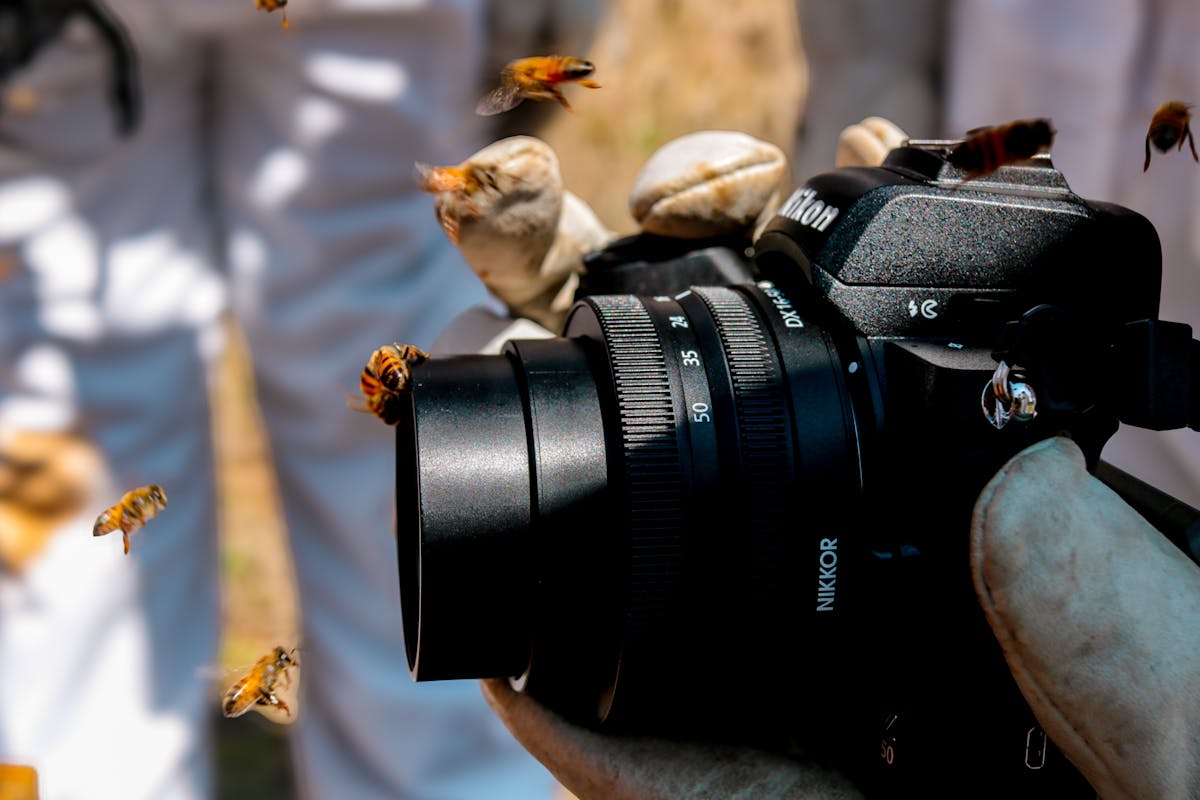
A Beginner’s Guide to Macro Photography: Discovering the World Up Close
Macro photography opens up a fascinating world that is often hidden from the naked eye. By capturing subjects at extreme close-up, macro photography allows you to explore intricate details, textures, and patterns that would otherwise go unnoticed. Whether you’re photographing flowers, insects, or everyday objects, macro photography invites you to see the world from a new perspective.
In this beginner’s guide, we’ll cover the essential tips and techniques you need to get started with macro photography. We’ll also explore how these principles can be applied creatively in a “photo booth” setting, offering guests a unique way to interact with the microscopic wonders around them.
1. Understanding Macro Photography
Macro photography is all about capturing subjects at a close range, typically at a 1:1 ratio or greater, where the subject appears life-size or larger in the photo. This genre of photography is perfect for exploring the fine details of small objects, revealing patterns, textures, and structures that are often overlooked.
Why It’s Unique:
Macro photography transforms ordinary subjects into extraordinary images. A simple dewdrop on a leaf or the delicate wings of a butterfly can become a mesmerizing focal point when viewed up close. This ability to showcase the beauty in the small details is what makes macro photography so captivating.
Pro Tip:
When starting out, choose subjects that are relatively stationary, such as flowers, leaves, or small objects. This will allow you to focus on mastering your technique without worrying about your subject moving out of frame.
2. Choosing the Right Equipment
To capture stunning macro photos, having the right equipment is crucial. While you can get started with a basic camera, investing in specific gear designed for macro photography will greatly enhance your results.
Macro Lens:
A dedicated macro lens is designed for close-up photography, offering a 1:1 magnification ratio. These lenses allow you to focus at very short distances, capturing incredible detail. Common focal lengths for macro lenses range from 60mm to 105mm.
Extension Tubes:
If you’re not ready to invest in a macro lens, extension tubes are a budget-friendly alternative. These tubes fit between your camera body and lens, allowing your existing lens to focus closer to the subject.
Tripod:
A sturdy tripod is essential for macro photography, as it helps eliminate camera shake and ensures sharp images. This is especially important when working with small apertures and slower shutter speeds.
Lighting:
Lighting can make or break a macro shot. Natural light is often ideal, but for indoor or low-light situations, consider using a ring light or a small LED light to illuminate your subject without creating harsh shadows.
Pro Tip:
Use a remote shutter release or your camera’s self-timer to reduce camera shake when taking macro shots, especially at high magnifications.
3. Mastering Depth of Field
One of the biggest challenges in macro photography is controlling depth of field. When shooting at close distances, the depth of field becomes extremely shallow, meaning that only a small portion of your subject may be in focus.
Aperture:
To increase depth of field, use a smaller aperture (higher f-stop number). However, keep in mind that this will reduce the amount of light entering the camera, so you may need to adjust your ISO or shutter speed to compensate.
Focus Stacking:
Focus stacking is a technique used to overcome the limitations of shallow depth of field in macro photography. It involves taking multiple images of the same subject at different focus points and then blending them together in post-processing to create a single image with a greater depth of field.
Pro Tip:
When focusing, choose the most important part of your subject to be sharp, such as the eyes of an insect or the center of a flower. This will draw the viewer’s attention to the focal point of the image.
4. Composition and Framing
Just like in any other genre of photography, composition is key to creating compelling macro images. However, the rules of composition can take on new importance when working with such small subjects.
Rule of Thirds:
Apply the rule of thirds by placing your subject off-center, along one of the grid lines or intersections. This creates a more dynamic and visually pleasing composition.
Fill the Frame:
In macro photography, filling the frame with your subject can create a powerful image that emphasizes the details and textures. Be mindful of the background, as any distracting elements can detract from the main subject.
Backgrounds:
A clean, uncluttered background helps your subject stand out. You can achieve this by using a wide aperture to blur the background or by carefully choosing your shooting angle.
Pro Tip:
Experiment with different angles and perspectives to find the most interesting way to present your subject. Shooting from above, below, or at eye level can drastically change the look and feel of your image.
5. Lighting Techniques for Macro Photography
Lighting plays a crucial role in macro photography, as it affects the visibility of fine details and the overall mood of the image.
Natural Light:
Soft, diffused natural light is ideal for macro photography, as it reduces harsh shadows and highlights. Early morning or late afternoon light is often the best, providing a warm, gentle glow.
Reflectors:
Use reflectors to bounce light onto your subject, filling in shadows and creating a more even exposure. Small, portable reflectors are perfect for macro work, allowing you to control the light without adding bulk to your setup.
Artificial Light:
In low-light conditions or when shooting indoors, consider using a ring light or LED panels to illuminate your subject. These light sources provide consistent, even lighting that enhances the details of your subject.
Pro Tip:
Avoid using direct flash, as it can create harsh shadows and wash out the details of your subject. If you must use flash, consider diffusing it with a softbox or bounce it off a nearby surface.
6. Incorporating Macro Photography in a Photo Booth
While macro photography is often associated with nature and small objects, you can bring the principles of macro photography into a photo booth setting or buy a roaming photo booth for a unique and creative twist.
Setting Up the Booth:
Create a macro-themed photo booth where guests can capture close-up images of small objects, textures, or even parts of their attire, like jewelry or fabric patterns. Provide magnifying glasses, mirrors, and other tools to enhance the experience.
Lighting and Backgrounds:
Ensure the photo booth is well-lit, with soft, diffused light to highlight the details of the subjects. Use simple, solid-colored backgrounds that won’t distract from the main focus of the image.
Pro Tip:
Encourage guests to experiment with different angles and perspectives, just as they would in traditional macro photography. This approach allows them to discover the beauty in the small details of their surroundings, creating unique and personal images.
Conclusion
Macro photography is a fascinating and rewarding genre that allows you to explore the world in a new and intimate way. By understanding the basics of equipment, depth of field, composition, and lighting, you can start capturing stunning close-up images that reveal the intricate beauty of small subjects.


